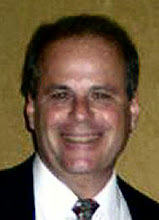- Great Artists Series: "The Immortal Al Jolson" is an exhibition that could only have been created with the cooperation of the International Al Jolson Society, which has over one thousand members.
Within this some thirty-page exhibition, you will find seventeen video clips and more than forty sound clips of Jolson, some where he's singing, others where he's being interviewed. You will also find video clips from his films, from newsreels, and even from a home movie (set to music, of course).
You can also hear sound clips from a number of Jolson's old radio shows--even guest star Fannie Brice appears, singing "My Man." There is one webpage, entitled "The Jewish Side of Jolson," where you can hear Jolson sing four songs including "Hatikvah," "Kol Nidre" (beautiful) and "Chazzan Oyfn Shabbas" (in English, "Cantor on the Sabbath").
You can also read about Jolson's personal (as well as his professional) life. This exhibition is highly recommended.
www.museumoffamilyhistory.com/ajolson.htm
The website of the International Al Jolson Society can be found at http://www.jolson.org/ . - Also another exhibition found within the Museum's Great Artists Series is "The Great Richard Tucker," who many of us know as a fabulous tenor, but did you know he was also a Cantor too? Within this exhibition you can read about Tucker's family life as well as hear him sing two arias from "Tosca", the aria "Vesti la giubba" from "I, Pagliacci" and "Nessun Dorma" from "Turandot."
www.museumoffamilyhistory.com/rtucker.htm - Screening Room: The Jewish documentary most often thematically deals with the many aspects, events and experiences of Jewish life that exists or existed within the Diaspora. These films attempt to honor and preserve these significant events that have become indelibly etched within the collective Jewish consciousness. It is for this reason that the Museum has created the "Screening Room." The Museum is honored to be able to share with you short previews of twenty such films, in the hope that you will want to see the film in its entirety somewhere, and when you do, consider what the filmmaker is trying to say; why he or she felt it was so important to make their film.
Lastly, the Museum urges you to support the Jewish documentarian and the work they do in whatever way you can.
www.museumoffamilyhistory.com/screeningroom.htm - World War II and the Holocaust: If you have the stomach for it, you can watch a one-hour film produced by the U.S. Department of Defense as the U.S. Army liberated a number of camps at the end of the War. The camps include Bergen-Belsen, Buchenwald, Dachau, Leipzig, Penig (a subcamp of Buchenwald), Ohrdruf (another subcamp of Buchenwald), Ahlen, Arnstadt, Nordhausen; Breendonck (Belgium) and Mauthausen (Austria). Also included are scenes from Hadamar, the psychiatric hospital in Germany that was used by the Nazis to perform mass sterilizations and mass murder of 'undesirable' members of Nazi society, specifically the physically and mentally handicapped.
www.museumoffamilyhistory.com/cc/ccamps-us.htm - "Seeking Justice! The Nuremberg Trials": A film of one hour and a quarter about the Nuremberg trials.
www.museumoffamilyhistory.com/mfh-rm012a.htm - There are many more video and sound clips that can be found within the virtual realm of the Museum of Family History. Just visit the Museum's Multimedia page which contains links to separate pages that list its audio and video collection.
www.museumoffamilyhistory.com/multimedia.htm
You should be forewarned that, depending on the media player(s) you have on your computer, you may or may not be able to play some of the videos. Also depending on your Internet connection, your download time may be short or long. The Museum, of course, regrets any incovenience or dissapointment that this may cause you.




No comments:
Post a Comment